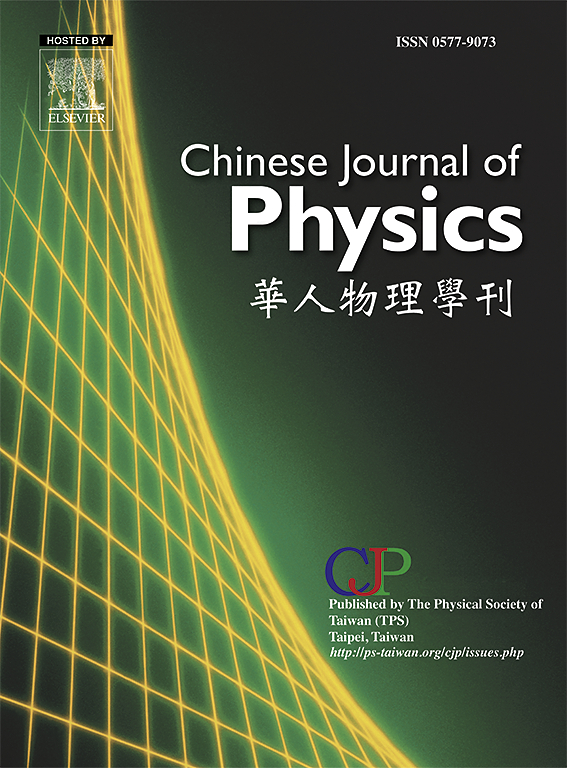Magnetohydrodynamics (MHD) flow of ternary nanofluid and heat transfer past a permeable cylinder with velocity slip
IF 4.6
2区 物理与天体物理
Q1 PHYSICS, MULTIDISCIPLINARY
引用次数: 0
Abstract
The increasing demand for energy-efficient and environmentally sustainable solutions has driven the exploration of ternary nanofluids for enhanced heat transfer applications. This numerical study investigates the magnetohydrodynamics (MHD) flow and heat transfer characteristics of a ternary hybrid nanofluid (copper-alumina-titania/water) over a shrinking/stretching cylinder, considering the effects of velocity slip, suction, and curvature parameters. The variable wall temperature is also included in the physical model. The model in PDEs is transformed into a simplified version of differential equations (ODEs) which can be solved using the bvp4c solver. Validation against previously published data confirms the accuracy of the model. Two solutions are possible if the shrinking surface is permeable (with suction effect), while only a unique solution is for the stretching case. Surprisingly, the copper-alumina-titania/water exhibits a lower heat transfer rate but higher skin friction as compared to the copper-alumina/water. Specifically, the heat transfer coefficient decreases by 5-10 % when incorporating the titania nanoparticle, while an increase of 8-12 % for the skin friction coefficient. Additionally, the velocity slip and curvature parameters accelerate the boundary layer separation, whereas increased suction delays this process. These findings provide insights into optimizing thermal management systems using ternary hybrid nanofluids, particularly under MHD effect.

求助全文
约1分钟内获得全文
求助全文
来源期刊

Chinese Journal of Physics
物理-物理:综合
CiteScore
8.50
自引率
10.00%
发文量
361
审稿时长
44 days
期刊介绍:
The Chinese Journal of Physics publishes important advances in various branches in physics, including statistical and biophysical physics, condensed matter physics, atomic/molecular physics, optics, particle physics and nuclear physics.
The editors welcome manuscripts on:
-General Physics: Statistical and Quantum Mechanics, etc.-
Gravitation and Astrophysics-
Elementary Particles and Fields-
Nuclear Physics-
Atomic, Molecular, and Optical Physics-
Quantum Information and Quantum Computation-
Fluid Dynamics, Nonlinear Dynamics, Chaos, and Complex Networks-
Plasma and Beam Physics-
Condensed Matter: Structure, etc.-
Condensed Matter: Electronic Properties, etc.-
Polymer, Soft Matter, Biological, and Interdisciplinary Physics.
CJP publishes regular research papers, feature articles and review papers.
 求助内容:
求助内容: 应助结果提醒方式:
应助结果提醒方式:


